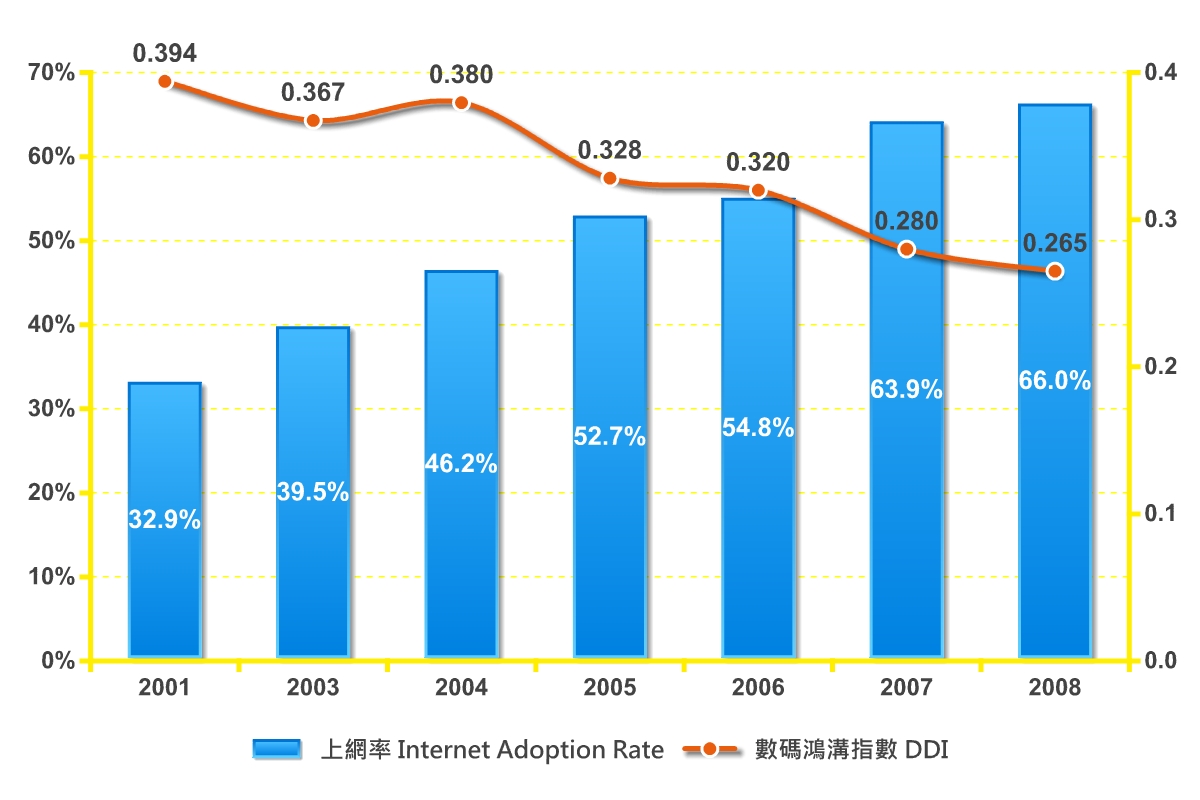The 2009 publication of the Macau Information and Communications Technology Survey which was released recently showed that the Internet penetration rate has increased year by year; the popularity of the Internet has already entered a “mature stage”. According to Dr. Angus Cheong who has conducted the research since 2001, as the “digital divide index” drops every year, it indicates that, generally speaking, the Internet has been equally accepted and adopted by different sectors of society.
“Surveying Macao ICT Indicators 2009”, part of the Macao Internet Project, led by Dr. Angus Cheong, an assistant professor of the University of Macau, aims at presenting to the public the trajectory of the developing of ICT. The latest results show that at the end of 2008, the local penetration rate of the Internet reached 66 percent in which the “digital divide index” continued to fall from 0.38 in 2004 to 0.27 in 2008. The results reflect that the Internet has penetrated into the general public and that all sectors in society have equal access to the World Wide Web. According to Cheong, the popularity of the Internet has already entered a “mature stage” and the decreasing digital divide index shows that the Internet, as a new information, entertainment and communication platform, has been equally accepted and adopted by different sectors of society.
Digital Divide Index (DDI) is calculated by the Gini coefficient formula, where the Internet users represent the digital indicator, i.e. whether an individual adopts the Internet or not. Four indicators (gender, age, occupation and educational level) represent the divide indicators. The larger the digital divide index value is; the more obvious the variance is; thus, the greater inequality in residents’ opportunity to access the Internet. More specifically, an index of less than 0.2 means “absolutely equal”; an index between 0.2 and 0.3 means “basically equal”; an index between 0.3 and 0.4 means “acceptablly equal”; an index between 0.4 and 0.5 means “seriously unequal”; an index higher than 0.5 means “extremely unequal”.
Netizens’ online time increases
Youth adoption rate is high
According to the “Surveying Macao ICT Indicators 2009” which was released recently, Macau netizens’ average weekly online time has increased from 13.2 hours in 2004 to 18.6 hours in 2008, a reflection of growing Internet popularization and constantly-increasing online activities. The survey also shows that the average weekly online time of young Internet users aged between 6 and 17 (19.3 hours) surpassed that of adult Internet users aged between 18 and 84 (18.5 hours) for the first time.
The increasing online time represents the diversification of online activities. More than half of the Internet users visit others’ blogs. In addition, almost 60% of the Internet users chat online or browse forums. Results show that netizens’ engagement in social media has already become a trend. Cheong emphasizes that, as more and more Internet users participate in the social media, express their ideas and post information on the Internet, the impact of social media cannot be underestimated, since this impact may be greater than that of the traditional media, it offers a channel for the local government to learn some thoughts of the residents.
“Surveying Macao ICT Indicators” indicates that the Internet penetration rate of adult users is 60.8%, while that of the youth is 93.9%. The average weekly online time of the youth is higher than that of adults, which implies that getting online has become one of the most important parts in everyday life among the youth. The penetration rate of senior middle school students reached 100%. This shows almost all the senior middle school students have become the Internet users. Angus Cheong says the effect of a mature Internet environment on the entire society cannot be underestimated, especially in policy-making, information dissemination and marketing strategies, these areas require new perspective.
The ICT booklet is composed of four parts, including adoption of ICTs such as the Internet, mobile phones, and cable TV, the usage of the Internet, DDI, and demographic structure of Internet users. Results are presented with twenty-one statistical charts. The electronic version can be downloaded at http://www.macaointernetproject.net/ .
Caption: Chart of DDI

